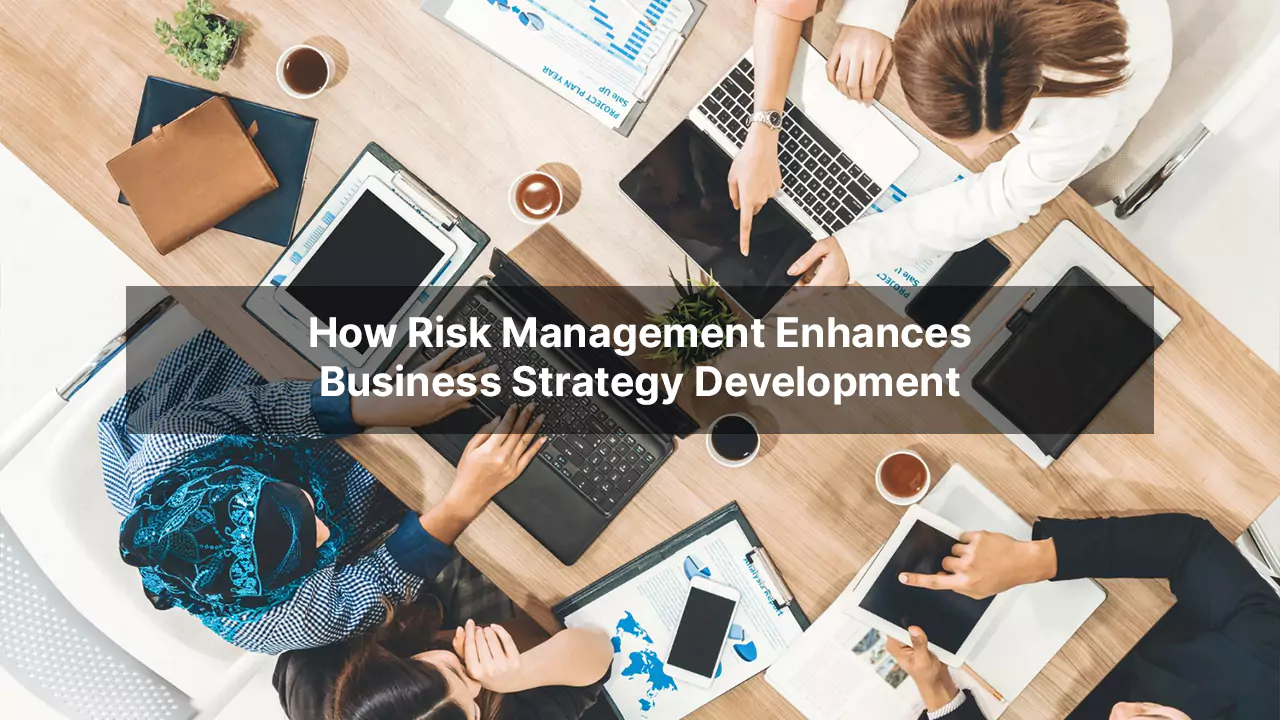How Risk Management Enhances Business Strategy Development
Table of Contents
- Identifying Potential Threats: The Foundation of Strategic Planning
- Incident Response Playbooks: Blueprint for Security Teams
- Risk Mitigation Plans: Building Organizational Resilience
- Leveraging Technology: Advancements in Risk Management
- Aligning Risk Management with Corporate Strategy: A Proactive Approach
- Continuous Monitoring and Adaptation: Staying Ahead of Emerging Risks
Integrating risk management into your operational strategy is indispensable for organizational resilience and growth, especially in today’s highly competitive business playing field.
To counter these hurdles, here are some angles while looking at risk management and building your stock of strategies for development.
Identifying Potential Threats: The Foundation of Strategic Planning
To manage risk effectively, a business needs to first recognize what could realistically go wrong. Financial losses, operational hiccups, or hits to reputation – any of these can throw plans off course.
Spotting these early gives you room to act, not react. It’s about introducing and weaving risk awareness into your decision-making so your strategy won’t just be about your firm’s growth, but about staying in control at the helm when things get rough.
This foresight enables businesses to navigate uncertainties and maintain a competitive edge.
According to some findings in 2024, institutions that integrate holistic risk management frameworks aligned with corporate strategy are capably backed up to address their most immediate threats and longer-term risks.
Incident Response Playbooks: Blueprint for Security Teams
Actually, security incidents don’t send you calendar invites – they hit hard and fast, often when teams least expect them. And when they do, hesitation can cost you big time; it can cost trust, revenue, and control.
This is where you need the incident response playbooks for security teams; they’re more than helpful – they’re essential. They’re more tailored action plans built around real-world scenes your team might face – from targeted phishing attacks to full-scale data breaches.
With this “gear” in place, there’s no second-guessing since everyone knows their role, the next step, and the fallback plan if things escalate. This kind of structure doesn’t just help with damage control – it shortens downtime, protects critical assets, and keeps leadership informed with facts, not guesses. In a high-stakes situation, that clarity is everything.
With predefined actions, organizations like yours can minimize damage and expedite recovery, thereby supporting overall business continuity and scalability. Many of today’s intelligence, like Wiz.io, emphasize that incident response guidebooks are the “must-have” blueprints for effective incident response, taking your security teams through standardized procedures, especially when they’re facing unprecedented critical situations. Incorporating risk management into your business strategy is essential; our sample business plans provide practical examples.
Risk Mitigation Plans: Building Organizational Resilience
You can’t control every risk, but you can control how ready you are. That’s the point of a solid risk mitigation plan, it’s not just listing threats but figuring out exactly how to deal with them before they cause problems. It’s about putting real safeguards in place – practical steps, not theory – to make sure issues are less likely to happen, and if they do, they hit softer.
When this readiness becomes part of how you run the business – not just a side project – it changes everything. You’re not just “reacting” when things go sideways; you’re steady, however the ground shifts. Companies that build this mindset into their strategy aren’t just surviving – they’re moving forward, even when conditions aren’t ideal.
Recent business reports take to the limelight those organizations with effective risk mitigation strategies, even for small enterprises, highlighting their resilience and capability to plan, keep up and sustain their operations even during crises.
Leveraging Technology: Advancements in Risk Management
Tech isn’t just a support tool anymore – it’s become central to how businesses manage risk. With AI, machine learning, and data analytics now in your biz bucket, you and your team can spot flags early, understand the scale, and move quickly and accurately on decisions that matter. It’s less guesswork, more clarity – and that leads to smarter strategy moves when the stakes are high.
And it’s not just hype – there’s real money behind this shift. Analysts expect the global Enterprise Risk Management market to hit $38.94 billion by 2028, with annual growth of around 10.6% since 2023. That kind of investment tells you one thing: businesses aren’t waiting around. They’re betting big on tech to help them stay ahead of risk, not just keep up with it.
Aligning Risk Management with Corporate Strategy: A Proactive Approach
Risk management can’t sit on the sidelines while you make big decisions – it has to be part of the game plan from the start. When you fold risk thinking into strategy, you’re not just reacting to problems – it’s planning with all eyes open. It also forces leadership to weigh risks and rewards side by side, which leads to sharper, more flexible moves in a fast-changing market.
Analysts tracking new and evolving threats are seeing a clear pattern: companies that bake risk awareness into daily operations – not just emergency plans – tend to be the ones still standing when markets get rough. It’s not about playing scared. It’s about building a business that can take a hit and keep its footing.
Continuous Monitoring and Adaptation: Staying Ahead of Emerging Risks
Business doesn’t stand still – and neither do the risks. Staying ahead means constantly watching for what’s coming next and being ready to shift strategy when the ground moves. Leaders who stay alert to changes – whether it’s market swings, tech shifts, or global instability – put their organizations in a better position to adapt without losing momentum.
Recent global analysis drives this home: companies that track and prepare for potential hits – like financial slowdowns, disruptive tech, or political volatility – are far more likely to stay competitive.
In conclusion, integrating risk management into business strategy development is vital for organizational resilience and success. By identifying potential threats, implementing incident response playbooks, developing risk mitigation plans, leveraging technology, aligning risk.

